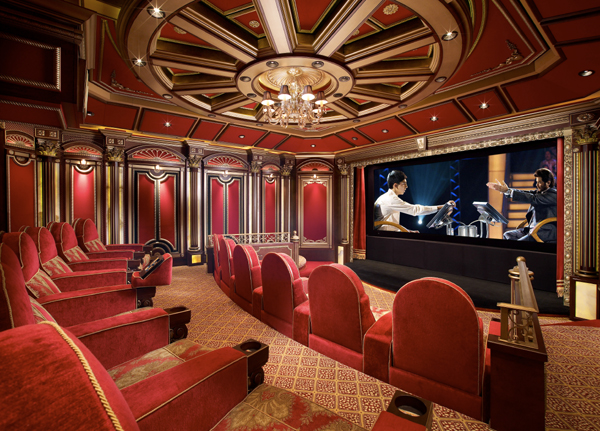Selecting The Right Screen For Your Home Theater
November 14, 2012
Often times, when considering a theater room in a home, there is one important piece of equipment that gets ignored and yet directly impacts the experience: The Screen. A lot of money is spent on the projector, the receiver, the speakers, the media player and the seating but then too many people just project their video up on a white wall. The screen is just as important as the projector itself and selecting the right screen will greatly enhance your experience. You should expect to spend around 15-30% of the cost of your projector on your projection screen. Here are a few things to consider when selecting your screen:

- Type of Screen:
- Manual pull-down screens are great for entry level home theater installations. They are simple, reliable and affordable.
- Fixed-frame screens are the most common for a dedicated theater room. Most high-end professional installers recommend fixed screens over retractable projection surfaces.
- Electric/motorized screens are great for concealment. If you would like to hide your screen completely and use the room for other purposes when the projector isn't in use, this is the way to go.
- Size: The screen should occupy a minimum of a 30˚ field of view for the audience. What does that mean? The basic rule of thumb is to use a screen height that is approximately one third the distance from the screen to the audience seating.
- Color & Gain: The color of the screen is more important than you might think and the gain, which is the screen's reflective property, directly correlates with the color of screen you choose.
- Matte white screens are great for dedicated theater rooms and any other space that you can directly control the lighting—such as a windowless area or a room equipped with blackout shades.
- Gray screens help reject ambient light, which deepens black levels and contrast. These screens are better suited for multipurpose media rooms which typically have more natural, ambient light.
- Screen gain is a measurement of a how much light is reflected by the projection surface. If you select a screen that has a gain above 1.0 then it will do a good job of distributing the light from the video projector across its surface. A high-gain screen can optimize the brightness of the projector, which can allow for a larger image area.
- Half gain angle is the angle from the center of the screen where the brightness of the image is half of its peak. The wider this angle is, the better the viewing from the sides. This is mostly only important with larger theater rooms that seat several people.
- Microperforation: This is when a screen has thousands of tiny holes in the screen which make it so that sound can be heard through speakers placed directly behind the screen. This is a great option if you would like to completely conceal your speakers but it will also increase the cost of your screen by quite a bit.
